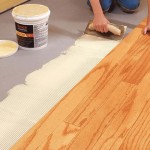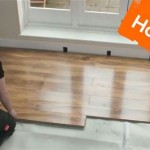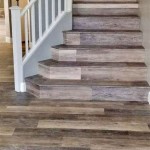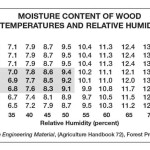White Wood Effect Laminate Flooring: A Comprehensive Guide
White wood effect laminate flooring offers a versatile and aesthetically pleasing alternative to solid hardwood flooring. It provides the visual appeal of natural wood with the added benefits of durability, ease of maintenance, and cost-effectiveness associated with laminate materials. This article provides a comprehensive overview of white wood effect laminate flooring, covering its characteristics, advantages, considerations for selection, installation procedures, and essential maintenance practices.
Laminate flooring, in general, is a multi-layered synthetic flooring product fused together through a lamination process. The core layer typically consists of high-density fiberboard (HDF) or medium-density fiberboard (MDF), providing structural integrity and resistance to indentation. A decorative layer, featuring a high-resolution photographic image of wood, is applied to the core. This decorative layer is protected by a clear, durable wear layer, which resists scratches, stains, and fading. The underlayment, often pre-attached to the laminate planks, provides cushioning and sound absorption.
The "white wood effect" refers specifically to the design of the decorative layer. This effect replicates the appearance of various types of wood that have been finished with a white stain, paint, or whitewash technique. The resulting aesthetic is often characterized by a bright, clean, and airy ambiance, suitable for a range of interior design styles, from Scandinavian and minimalist to coastal and contemporary.
Key Point 1: Advantages of White Wood Effect Laminate Flooring
White wood effect laminate flooring boasts several significant advantages over traditional hardwood floors. These advantages contribute to its popularity and make it a compelling choice for homeowners and property developers.
Cost-Effectiveness: Laminate flooring is considerably more affordable than solid hardwood. The lower material cost, coupled with potentially simpler installation procedures, makes it a budget-friendly option for large areas or entire homes. The price difference expands further when comparing it to exotic or premium hardwood species that are notoriously expensive. Affordability makes this option accessible to a wider range of consumers.
Durability: The wear layer on laminate flooring provides exceptional resistance to scratches, dents, and fading. This makes it a practical choice for high-traffic areas and households with pets or children. The superior resistance to surface damage minimizes the need for frequent repairs or refinishing, a common requirement of hardwood flooring. The durability translates to long-term cost savings and reduced maintenance efforts.
Ease of Maintenance: Laminate flooring is relatively easy to clean and maintain. Regular sweeping or vacuuming is sufficient to remove dust and debris. Spills can be easily wiped up with a damp cloth. Unlike hardwood, laminate is resistant to staining from common household liquids. The ease of maintenance makes it a desirable option for busy households seeking low-maintenance flooring solutions.
Moisture Resistance: While not entirely waterproof, laminate flooring offers better moisture resistance than hardwood. This makes it suitable for use in kitchens, bathrooms, and basements, although specialized water-resistant or waterproof laminate options are specifically designed for moisture-prone environments. The improved moisture resistance reduces the risk of warping, swelling, or mold growth that can occur with hardwood flooring in damp conditions.
Installation Simplicity: Many laminate flooring products feature a click-lock installation system, allowing for relatively straightforward installation without the need for specialized tools or adhesives. This simplifies the installation process, making it a potential DIY project for experienced homeowners. Professional installation is still recommended for optimal results, especially in complex layouts or areas with uneven subfloors.
Design Versatility: White wood effect laminate flooring is available in a wide range of shades, textures, and plank sizes, offering considerable design flexibility. It can mimic the look of various wood species, including oak, maple, and pine, finished with a white stain or paint. This versatility allows homeowners to achieve their desired aesthetic without the cost and maintenance associated with real hardwood.
Hypoallergenic Properties: Laminate flooring is generally considered a hypoallergenic flooring option. Its smooth, non-porous surface prevents the accumulation of dust mites, allergens, and pet dander. This makes it a suitable choice for individuals with allergies or respiratory sensitivities. Unlike carpets, which can trap allergens, laminate provides a cleaner and healthier indoor environment.
Key Point 2: Considerations When Selecting White Wood Effect Laminate Flooring
Choosing the right white wood effect laminate flooring requires careful consideration of several factors to ensure it meets specific needs and aesthetic preferences.
AC Rating: The Abrasion Class (AC) rating indicates the durability of the wear layer. Higher AC ratings signify greater resistance to abrasion and wear. For residential use, an AC3 rating is generally suitable for moderate traffic, while an AC4 or AC5 rating is recommended for high-traffic areas or commercial applications. Selecting the appropriate AC rating ensures the flooring can withstand the expected level of wear and tear.
Thickness: The thickness of the laminate plank affects its stability, sound absorption, and overall feel underfoot. Thicker planks tend to be more resistant to deflection and offer better sound insulation. Plank thicknesses typically range from 7mm to 12mm. Thicker planks are generally preferred for areas with uneven subfloors or for enhanced comfort.
Water Resistance: Determine the level of moisture resistance required based on the intended location of the flooring. For kitchens, bathrooms, or basements, opt for water-resistant or waterproof laminate options. These products feature specialized cores and edge sealants to prevent water penetration. Standard laminate flooring may be susceptible to damage from prolonged exposure to moisture.
Plank Size and Style: Laminate flooring is available in various plank sizes and styles, including wide planks, narrow planks, and planks with beveled or square edges. Wider planks can create a more spacious and modern look, while narrower planks can mimic the appearance of traditional hardwood floors. Beveled edges create subtle grooves between planks, enhancing the visual definition. The selected plank size and style should complement the overall design of the room.
Color and Texture: White wood effect laminate flooring is available in a range of white shades and wood grain textures. Consider the existing color palette of the room and the desired aesthetic when selecting the color and texture. Lighter shades of white can brighten up a room and create a sense of spaciousness, while darker shades can add warmth and character. Textured surfaces can enhance the realism and feel of the flooring.
Underlayment: The underlayment provides cushioning, sound absorption, and moisture barrier. Some laminate flooring products come with pre-attached underlayment, while others require a separate underlayment to be installed. Choose an underlayment that meets the specific needs of the installation, considering factors such as sound transmission, moisture levels, and subfloor condition. A good underlayment contributes to the comfort and longevity of the flooring.
Warranty: Review the manufacturer's warranty carefully before purchasing laminate flooring. The warranty should cover defects in materials and workmanship, as well as premature wear or fading. Longer warranties typically indicate a higher level of product quality and durability. Understanding the warranty terms provides peace of mind and protects the investment.
Key Point 3: Installation and Maintenance of White Wood Effect Laminate Flooring
Proper installation and maintenance are crucial for maximizing the lifespan and aesthetic appeal of white wood effect laminate flooring.
Subfloor Preparation: Ensure the subfloor is clean, level, and dry before installing laminate flooring. Any imperfections or irregularities in the subfloor can affect the stability and appearance of the finished floor. Repair any cracks, holes, or uneven areas with appropriate patching compounds. The subfloor should be thoroughly cleaned and vacuumed to remove dust and debris. A level subfloor is essential for a successful installation.
Acclimation: Allow the laminate flooring to acclimate to the room's temperature and humidity for at least 48 hours before installation. This allows the planks to expand or contract to their natural dimensions, preventing warping or buckling after installation. Store the planks in the room where they will be installed, away from direct sunlight or heat sources. Acclimation is a critical step for ensuring the long-term stability of the flooring.
Installation Techniques: Follow the manufacturer's instructions for proper installation techniques. Most laminate flooring products feature a click-lock system that allows for easy installation without the need for adhesives. Begin installation along a straight wall, leaving a small expansion gap between the flooring and the wall. Use spacers to maintain the expansion gap. Stagger the end joints of adjacent planks to create a more visually appealing and structurally sound floor. Precise installation is crucial to the final appearance and longevity of the floor.
Cleaning and Maintenance: Regularly sweep or vacuum the laminate flooring to remove dust and debris. Use a damp mop with a mild detergent specifically designed for laminate floors to clean the surface. Avoid using excessive water, as it can seep into the seams and damage the core layer. Wipe up spills immediately to prevent staining. Use felt pads under furniture legs to prevent scratches. Proper cleaning and maintenance will keep the floor looking its best for years to come.
Protection from Excessive Moisture: While laminate flooring offers some degree of moisture resistance, it is important to protect it from excessive moisture. Avoid using wet mops or steam cleaners. Place mats at entrances to prevent dirt and moisture from being tracked onto the floor. Repair any leaks or plumbing issues promptly to prevent water damage. Minimize exposure to standing water to prolong the life of the flooring.
Repairing Damage: Minor scratches or dents can often be repaired with a laminate repair kit. These kits typically include fillers and color-matching compounds to disguise the damage. For more extensive damage, it may be necessary to replace individual planks. Carefully remove the damaged plank and replace it with a new one, following the manufacturer's instructions. Prompt repair of damage will prevent further deterioration and maintain the appearance of the floor.
Professional Consultation: If unsure about any aspect of the installation or maintenance process, consult with a professional flooring installer. A professional can provide expert advice and ensure the flooring is installed correctly and maintained properly. This is especially important for complex installations or areas with challenging subfloor conditions. Professional guidance contributes to a satisfactory and long-lasting flooring solution.

Prestige White Oak 8mm V Groove Laminate Flooring 3201

Series Woods 8mm Laminate Flooring White Oak

Series Woods 8mm Laminate Flooring White Oak

Series Woods Professional 10mm Laminate Flooring White Oak

Folk White Oak Wood Effect Flooring Pack Of 16 Tradepoint

Farmhouse White Laminate Flooring Direct Wood

Wood Laminate Flooring Tiles Wooden

Fresno Snow Oak Easy Touch 8mm High Gloss Laminate Flooring 197318 Wohimmer Penthaus Boden

This Lovely White Laminate Floor Looks Just Like Freshly Fallen Snow Parquet Stratifié Chêne Conception Du Plancher Blanc

White Oak Laminate Flooring 1195x189x12 Mm Wood Tiles Wooden
Related Posts








